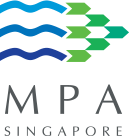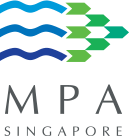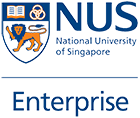Shipboard sensor kit for harbour craft
Smart Shipping
BACKGROUND
The Maritime Singapore Decarbonisation Blueprint 7 by MPA outlines 7 focus areas including “Future marine fuels (Eg. Ammonia, methanol and LNG), bunkering standards and infrastructure”. With the IMO’s ambition to halve greenhouse gas emissions (GHG) by 2050, the world’s future fleet will have to rely on a wider range of fuels and adopt novel propulsion solutions and energy efficiency measures. While alternative fuel promise GHG reduction, they pose risk due to the toxicity and flammability. As these fuels gain traction, it is important to monitor vessels closely for safety. Early detection is imperative, demanding enhanced maritime domain awareness and integrated sensor system with remote monitoring capability. Such systems offer real-time data fusion from multiple environmental sensors, enabling prompt response to environmental conditions and informed decision-making. This comprehensive approach ensures crew confidence in operating vessels carrying future fuels and equips them to respond effectively to any challenge. How might we develop a multi-sensor kit that can enhance remote environmental modelling and maritime situation awareness?
SIGNIFICANCE OF PROBLEM
The current concept revolves around three main aspects:
(1) detect leaks,
(2) monitor their extent, and
(3) supporting decision-making.
However, conventional marine environment monitoring systems, lack a unified platform for correlating and data analysis. Off-the-shelf sensor kits, although available, are typically standalone and lack interoperability and analytics capabilities.
Real-time monitoring: With sensor fusion, data from various environmental sensors can be collected and analysed in real-time, providing up-to-date information on environmental conditions. This will enable early detection and allow for timely response and mitigation measures to be implemented.
Comprehensive coverage: By integrating data from multiple sensors, a more comprehensive picture of the maritime environment can be obtained, allowing for better understanding and assessment of environmental parameters.
Enhanced Decision-Making: By providing accurate and timely data, sensor fusion systems support informed decision-making by maritime authorities, environmental agencies, and vessel operators, facilitating effective resource management and environmental protection efforts.
POTENTIAL MARKET SIZE
- Applicable to all harbour craft in Singapore, with approximately 1600 propelled ones operating in Singapore’s waters in 2023.
EXISTING EFFORTS
- Currently there are integrated sensors, but they are catered more for buoy platforms, not for installation onboard harbour craft.
SOLUTION SUCCESS PARAMETERS
- Cost effective.
- Easy for installation on harbour craft.
POTENTIAL SOLUTION SPACES
Some preliminary requirements are given below:
- Sensor capabilities and accuracy*
- Wind speed (range 0 – 60m/s, accuracy + 0.3m/s)
- Wind direction (range 0-360°, accuracy + 3°)
- Air temperature (range -50 to 60°C, accuracy ± 0.3°C)
- Relative humidity (range 0 to 100%, accuracy ± 3%)
- Location sensor (accuracy ± 3m) – Not limited to GPS or GNSS
- Ammonia gas detector (range 0 to 1000ppm, accuracy ± 15ppm)
- Methane gas detector (range 0-100 %LEL, accuracy ±3 %LEL)
*Typical values and subject to vendor/datasheet specified operating and environmental
conditions, as well as sensor quality and calibration
- Engineering design
- Weatherproof housing (minimum IP67 and above)
- Design for high compliance to Electromagnetic Compatibility (EMC) specifications
- Protection against excessive vibrations
- Corrosion-resistant to salt-water
- Quick deployable and versatile mounting system to allow mounting on almost any surface
(e.g. pole-mount) - Small sensor kit footprint to be deployable on harbour craft, ideally within
300mm x 300mm
- Power considerations
- Typical shipboard/harbour craft available electrical power supply connection
- Battery backup system with charging function
- Solar power integration if possible
- Telemetry and associated functions for sensor kit
- Selected datalogger should be modular and able to integrate with third-party sensors (e.g. subsea and meteorology sensors) via Application Programming Interfaces (APIs).
- Sensor interface inputs and outputs should include (but not limited to):
- Analog inputs (4-20mA)
- Serial Digital Interface at 1200 baud (SDI12)
- Digital inputs, Digital outputs
- RS-232, UART, RS-422, RS-485, Modbus serial interfaces
- CANbus protocol (AiCaP) using XML for plug and play capabilities.
- USB for local PC operations
- LAN (RJ-45) for networked operations
- Cellular (4G/5G) or Wi-Fi for wireless communications
- Local display with inbuilt status LED indicators, externally visible
- Integrated strobe for visual alarm indication
- Integrated siren for audible alarm indicator



